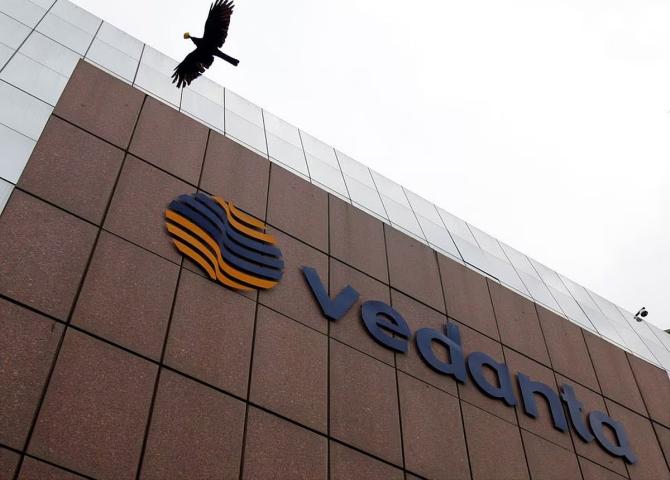Vedanta Limited (Vedanta) helping its parent and group holding company Vedanta Resources to deleverage its balance sheet has started to strain its balance sheet.

Vedanta’s gross debt (consolidated) was up 24.3 per cent year-on-year (YoY) in FY23 and reached a six-year high of Rs 66,628 crore by the end of March.
Similarly, its net debt went up 20.3 per cent YoY to Rs 45,706 crore at the end of FY23, up from Rs 38,228 crore a year ago; it was the highest since FY20.
Analysts attributed this to a record dividend payout by the mining and metals major last financial year despite a sharp fall in its earnings and cash flows.
The company reported cash & equivalent worth Rs 20,922 crore at the end of March.
The company paid a record equity dividend of Rs 37,758 crore (approximately $4.4 billion) in FY23, more than three times its net profit last financial year.
Nearly two-thirds of this dividend amount accrued to the group holding company that used it to prepay part of its debt and deleverage its balance sheet.
In April, Vedanta Resources announced that it had reduced debt by $3 billion since February 2022.
The promoters hold a 68.11 per cent stake in Vedanta.
In contrast, there was a sharp contraction in Vedanta’s net worth or shareholder’s equity in FY23 as the hefty dividend payout led to a decline in reserves and surpluses.
Its consolidated net worth (net of minority interest) was down 38.8 per cent YoY to Rs 29,419 crore — the lowest in seven years.
As a result, the firm’s debt-to-equity ratio more than doubled in FY23.
Its consolidated gross debt-to-equity ratio jumped to 2.3x in FY23, from 1.1x at the end of FY22; the net debt-to-equity ratio rose to 1.6x, from 0.8x a year ago.
A deterioration in Vedanta’s financial ratio has pushed credit rating agencies to revise their outlook.
Crisil Ratings has changed its rating outlook on NCDs and long-term bank facilities of Vedanta to negative from stable.
“The revision in outlook reflects the possibility of higher-than-expected financial leverage and lower financial flexibility with reducing ratio of cash surplus to 1-year maturities for fiscals 2023 and 2024.
"This is due to increased cash outflow from Vedanta, in the form of dividends, towards large maturing debt obligations at its parent firm,” wrote analysts at Crisil Ratings in their recent rating report on the firm.
There was a similar rating action by India Ratings & Research citing the elevated risk of refinancing at an increased cost of borrowing with scheduled material debt repayments at Vedanta and Vedanta Resources in FY24 and FY25.
The rise in the Vedanta borrowings and balance sheet leverage is coming at a time when there has been a slowdown in its revenue growth and a sharp decline in earnings.
“Globally, the commodities market is facing multiple headwinds, such as inflationary pressure, weak macroeconomic scenario, recessionary pressure across Europe, liquidity crunch across some developing countries, and muted demand pick-up from China,” wrote analysts at Motilal Oswal Financial Services in their Q4FY23 earnings review of Vedanta.
The company has a diversified portfolio and produces aluminium, copper, zinc, silver, iron ore, iron & steel, and nickel.
Vedanta's consolidated net sales were up 10.8 per cent YoY to Rs 1.45 trillion in FY23, a sharp deceleration from 50.8 per cent YoY growth reported in FY22.
The company's consolidated operating profit or Ebitda was down 2.6 per cent YoY to Rs 37,056 crore in FY23; its net profit was down 43.8 per cent YoY to Rs 10,574 crore.
The firm’s bottom line also faces headwinds from a sharp rise in its interest expenses, additional borrowings, and a rise in interest rates.
Vedanta interest expenses were up 30 per cent YoY to an all-time high of Rs 6,225 crore in FY23, from Rs 4,797 crore a year. As a result, its interest coverage ratio declined to 6x in FY23, from 9.7x a year ago.
Analysts expect moderate growth in Vedanta’s revenues and operating profit in FY24 on account of higher capacities and backward integration but a higher-than-expected dividend outflow, expenses on capex and higher interest expenses could keep its balance sheet under strain.












 © 2025
© 2025